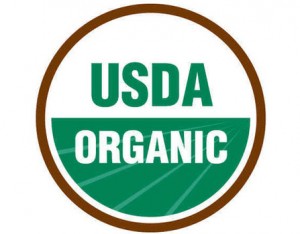Organic Meat vs Non-Organic: Decoding the Danger Behind the Labels

Over the years of my trials and tribulations on finding a healthy diet regime that fits my taste and lifestyle, there has always been one consistent conclusion that I have found in every food plan. That is to eat as much organic food as one can afford. I have struggled to prioritize which items I will splurge on and which will have to bite the bullet. But the answer is clear as the research repeatedly responded that when trying to eat for optimal health, organic meat is where you should prioritize your purse.
The recent explosion in the media on the subject of the super-resistant strains of bacteria found in antibiotic-treated ground turkey had me thanking my lucky stars that I made the choice to eat organic meat. This prompted me to look further into the health risks of the mass produced meat offered up by the industry. And what I found left a very bad taste in my mouth. At least I think I have finally found a way to stop spending money going out to restaurants, or at least those that do not have organic meat on the menu.
Here is what I have found on what to look for in the meat that you eat:
Antibiotic-free – Consumer reports did a study on ground turkey and found that turkey raised with antiobiotics contained high levels of bacteria including enterococcus, E. coli, staphylococcus aureus and salmonella. 90% of the meat tested contained one of the five strains and over half were resistant to three or more antibiotics. Organic meat and antibiotic-free meat also contained bacteria but they were much less resistant to antibiotics.
Grass-fed – A scientific study that spanned three decades published in the Nutrition Journal found that grass-fed beef had higher levels of omega 3 fatty acids, vitamins, antioxidants and cancer fighting properties than grain-fed beef. It also had lower levels of cholesterol and unhealthy fats.
Hormone-free – Dairy milk from cows treated with hormones have higher levels of IGF-1 which is a natural growth hormone in humans. Early studies showed a relationship between levels of this hormone and the development of cancers including prostate, breast and colorectal. The EU has banned the use of synthetic hormones in its meat since 1981 and has banned the import of meat treated with such hormones.
Nitrate-free – Nitrates are preservatives found mainly in cured processed meats such as hot dogs, sausages, bacon and lunch meats. These can increase risk of heart disease according to the Mayo clinic. Nitrates are also carcinogenic and ingesting high doses of them can increase risk of cancer.
Vegetarian-fed – Many of the mass produced meat farms grind up cattle and animal parts and feed it back to the livestock. This is dangerous because it can cause diseases such as the mad cow disease, aka bovine spongiform encephalopathy.
The easiest way to know that your meat was not raised with growth hormones or antibiotics, was fed 100% organic feed and had access to the outdoors is to make sure it has the official USDA Organic Seal (see above). This verifies that the producers were reviewed and met the standards of animal health and welfare.
For more information about the criteria on organic labeling and other labeling of meats, you can visit the USDA Organic website here.






Leave a Reply